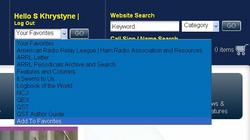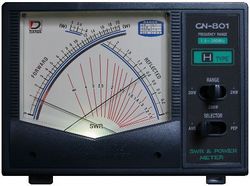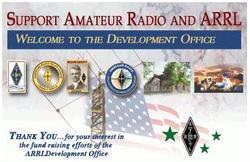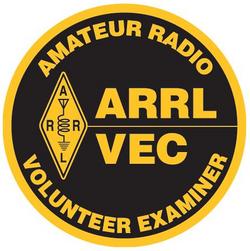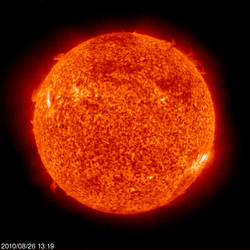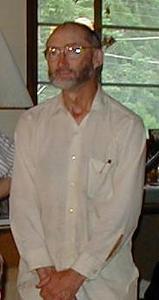 August 26, 2010 John E. Ross, KD8IDJ, Editor
| ||||||||||||
+ Available on ARRL Audio News + Public Service: Pakistani Amateurs Team Up to Provide Communications, Relief Support for Flood Victims
According to the Pakistan Amateur Radio Society (PARS) -- that country's IARU Member-Society -- radio amateurs in Pakistan have teamed up with the Islamabad Jeep Club and Pakistan Academy of Family Physicians to provide relief activities in those areas of Pakistan devastated by floods. The groups will supply food, tents and medical support to the northern flood affected areas of Nowshera, Charsadda and central Sargodha districts.
"The cellular services are down and so is the landline," the PARS Web site reports. "Last week, the joint team carried out a survey in the north and the center of the country, and to its dismay, the situation isn't promising. Restoration of cellular services and landlines could take months." On August 21, hams reached the town of Dharkhanawala, looking to set up communications, but had to turn back because the equipment had not arrived; however, teams were able to distribute food in Dharkhanawala and Chauki Darab. Read more here. ARRL Web Site: Using the "Your Favorites" Feature and Retrieving Forgotten Passwords By ARRL News Editor S. Khrystyne Keane, K1SFA Since we introduced the new ARRL Web site this past April, we have received inquiries on how to retrieve forgotten passwords, as well as how to use the "Favorites" function -- a "bookmark" feature -- on the new site.
Have you forgotten your password? You can easily retrieve it by clicking on the "Forgot Password?" link, located directly under the log-in box at the top of the page (see photo). You can either request to receive a temporary password via e-mail (you must use the e-mail you originally used to register for the previous ARRL Web site), or you may retrieve a temporary password immediately by providing your user name (for hams, this is usually your call sign) and your ARRL member ID number (you can find this on your QST mailing label). You must also provide either your call sign or your last name. Click here to receive a temporary password. First time Web users can get an online user name and password by clicking in the "Register" link, located next to the "Forgot Password?" link.
Once you have successfully logged in to the Web site, you will see a drop-down box that says "Your Favorites" right underneath your name (see photo). Now navigate to any page on the ARRL Web site. Would you like to find it in just one step the next time you need it? The "Your Favorites" feature will do just that! When you are on the desired page, just click on the "Your Favorites" drop-down
menu, click "Add to Favorites" then click the "Go" button. Now you have stored that Web page as one of your favorites; each time you wish to go to that page, you can just access it through the "Your Favorites" drop-down menu (see photo). If you have any questions or concerns about the new ARRL Web site, please direct them to Katie Glass, our Digital Content Manager. You can send them via e-mail or call Katie directly at (860) 594-0250. + ARRL Elections: Summer Section Manager Election Results
Southern Florida and Oklahoma will have new Section Managers starting in October, and the incumbent Section Manager of Ohio was re-elected in the summer Section Manager election cycle that concluded on Tuesday, August 24; election ballots were counted August 24 at ARRL Headquarters. Terms for new Section Managers will begin on October 1, 2010. Read more here. + The Doctor Is IN: SWR Bil Paul, KD6JUI, of Dixon, California, wrote to the ARRL's Doctor, noting that he noticed when he was tuning for optimal background noise while in receive mode, it came close to -- but didn't match -- the dial positions for minimal SWR while transmitting. He asked which of the two antenna tuner dial settings would result in the most transmitted energy while in transmit mode. He also wants to know if minimal SWR always indicates the most transmitted energy going to the antenna system. Here's what the Doctor had to say: In answer to the first question, by setting the antenna tuner to an SWR of 1:1, you have transformed the impedance at the bottom of your antenna feed line to 50 ohms, just what your transceiver is designed to deliver its rated power into. If your receiver input impedance were exactly 50 ohms, then that setting would likely also be the position that would yield maximum receiver noise. As it happens, there is no such guarantee that the input impedance of the receiver will be exactly 50 ohms. Although it should be pretty close, a slight change may yield a stronger signal into the receiver.
Regarding the second question, the transceiver is rated to provide its design output power into 50 ohms, usually within a specified SWR range. As was pointed out by Eric Nichols, KL7AJ, in a QST article last year ["Keeping Current with Antenna Performance," Feb 2009, pages 34-36], an SWR of 1:1 does not generally result in the maximum power output. By building a transmission line current meter, such as described by Eric, or later by Paul Danzer, N1II ["A Simple Transformer to Measure Your Antenna Current," Sep 2009, page 35], you can actually tune the antenna tuner to get the highest output. This corresponds to the maximum current into the antenna, which may occur at some setting different from either of the above. Be careful, though: If you exceed the maximum rated SWR, the resulting voltages or currents in the final amplifier or output filter of the transceiver will exceed design specs and damage may result. The likely small increase in transmitted power is likely neither worth the trouble nor the risk, in my opinion. Thanks Doctor! Do you have a question or a problem? Send your questions via e-mail or to The Doctor, ARRL, 225 Main St, Newington, CT 06111 (no phone calls, please). Look for "The Doctor Is IN" every month in QST, the official journal of the ARRL. Support ARRL: ARRL Encourages Monthly Giving
The ARRL Development Office is dedicated to raising funds for those programs not funded entirely by member dues. Whether your interest is focused on protecting Amateur Radio operating frequencies, expanding ARRL's national initiative promoting science and math education, or securing the future of the W1AW, The Hiram Percy Maxim Memorial Station, your financial support is vital. "Now it's easier than ever to make a commitment to ARRL," said ARRL Chief Development Officer Mary Hobart, K1MMH. "By contributing as little as $10, $20 or $100 per month, you can be part of a strong financial forecast for those programs that are at the heart of our service." More and more ARRL members are taking advantage of this option to contribute to the Diamond Club, the Spectrum Defense Fund, the Education & Technology Fund and the W1AW Endowment Fund. Read more here. + ARRL VEC Volunteer Examiner Session Participation Web Page Returns
If you're an ARRL Volunteer Examiner (VE) who is interested in seeing how many ARRL exam sessions you've taken part in, you can find the answer on the VE Session counts Web page. On this page, you'll be able to access a list that shows the total number of exam sessions that each ARRL VE has conducted. The listings are listed first by state and then in alpha-numeric call sign order (call area number, then suffix letters). The state where an individual VE record is located is based on the VE's official address on file with the ARRL Volunteer Examiner Coordinator. Only currently accredited ARRL VEs will be displayed on the Web page. ARRL VEC Manager Maria Somma, AB1FM, said she is "thrilled" that the enhanced page now includes the VEs name, as well as the call sign and session participation total: "Incorporating the name field in the lists added a higher level of authentication when determining a VE's accreditation status and participation. We applaud the volunteers whose dedication and service make the VE program successful. Your hard work and contribution of countless hours of your time helps ensure the future of Amateur Radio. Your efforts matter and we thank you. Our VEs should be very proud of their accomplishments." + Solar Update
Tad "Shadows stalled against the pitiless scope of the Sun" Cook, K7RA, reports: This week saw three days -- August 21-23 -- with no sunspots, and the average daily sunspot numbers for the week -- August 19-25 -- declined more than 28 points to 8, compared to the previous week. The average daily solar flux was down five points to 75.3. The last period of three days or more of no sunspots ended on May 20, 2010, around 100 days ago. Sunspot group 1100 disappeared on August 21, only to return August 25. In this case, the sunspot group didn't transit the non Earth-facing side of the Sun, but it just faded from view, returning just as it is about to rotate off of the Sun's western limb. Sunspot group 1101 appeared on August 24, and on August 25, it had grown to three times its initial size. Daily sunspot numbers for August 24-25 were 11 and 23. Remember: the sunspot number is not the same as the number of sunspots. The smallest non-0 sunspot number is 11. Each spot gets 10 points for being a sunspot group and one point for containing one sunspot. The sunspot number of 23 on August 25 represents two sunspot groups, at 10 points each, one containing one sunspot (1 point) and the other containing two sunspots (2 points). On August 25, it appears that a new smaller sunspot may be emerging between the eastern horizon and sunspot group 1101. A stiff solar wind from a coronal hole increased geomagnetic activity. The planetary A index for August 21-25 was 3, 4, 7, 18 and 20. Thursday's projection shows this decreasing, with the planetary A index on August 26-28 at 15, 10 and 8, followed by a quiet reading of 5 for the next three weeks. Solar flux for the same period is expected to be 75 for August 26-31, then 76 and 80 for September 1-2, and 85 on September 3-5. Several weeks from now is the fall equinox, which is a good time for HF propagation. The autumnal equinox will be at 0309 UTC on September 23, 2010. Look for more information on the ARRL Web site on Friday, August 27. For more information concerning radio propagation, visit the ARRL Technical Information Service Propagation page. This week's "Tad Cookism" is brought to you by Melissa Green's August. + On the Air: ARRL EME Contest Coming September 4-5 The 2.3 GHz+ version of the ARRL EME Contest will be 0000 UTC September 4 through 2359 UTC September 5. The objective is to work as many stations in as many different 2 degrees × 1 degree grid squares as possible via the Earth-Moon-Earth path on any authorized amateur frequency above 2.3 GHz. Two other EME contests are scheduled for October: the 50-1296 MHz version will be October 2-3 and October 30-31. See the ARRL Contests page for more information. + Silent Key: Ornithologist Arlo Raim, KB9LLF (SK)
Arlo Raim, KB9LLF, of Danville, Illinois, was killed by a southbound Canadian National freight train on the morning of Friday, August 20. He was 67. Raim had been in Pratt's Wayne Woods Forest Preserve -- part of the Forest Preserve District of DuPage (Illinois) County -- to monitor the effect of increased train traffic on cardinals. "He was one of, if not the best, bird tracker in the world," said Dr Mike Ward, Coordinator of the Critical Trends Assessment Program at the Illinois Natural History Survey and one of Raim's supervisors. "He used radio telemetry to track animals as varied as peregrine falcons, coyotes, turtles and northern cardinals." According to Ward, Raim's most noteworthy research may have been the 2002 tracking that showed crows changed roosts every two days, a discovery that shed light on why West Nile virus is able to spread so rapidly. Read more here. This Week on the Radio This week:
Next week:
All dates, unless otherwise stated, are UTC. See the ARRL Contest Branch page, the ARRL Contest Update and the WA7BNM Contest Calendar for more info. Looking for a Special Event station? Be sure to check out the ARRL Special Events Station Web page. Upcoming Events
| ||||||||||||




